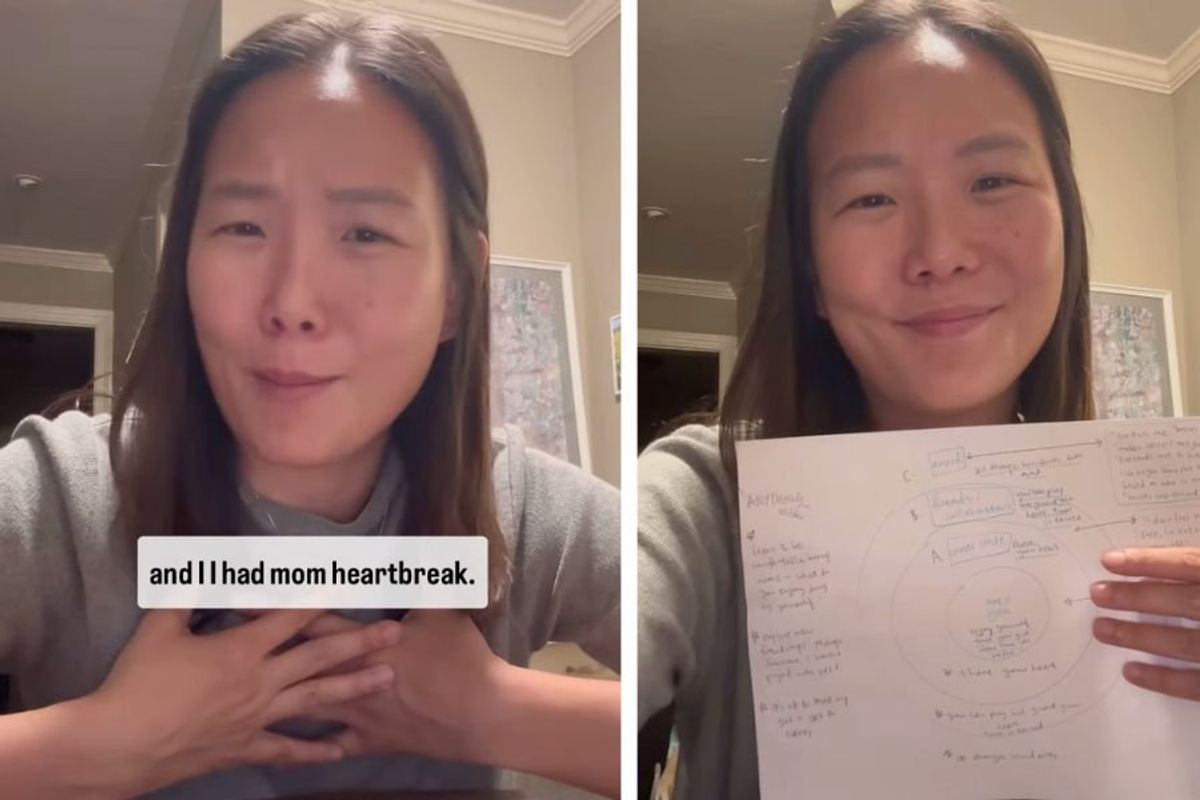Heartbroken mom uses painful moment to teach her daughter about the 'circles of friendship'
Honestly, this is a great idea for kids and adults alike.

Where was this when we were kids?
There comes a time in every person’s childhood when we learn the hard way who our close friends are…or aren’t. This may be revealed via a party invite that never comes, a BFF who suddenly becomes distant, or a sworn secret that gets spilled. While these lessons are necessary, it doesn't make them any less painful. And for parents watching their own kids go through it, it can be pretty devastating.
But one mom, Karen Tay, has a simple and effective strategy for helping kids navigate the tough terrain of friendships by teaching them the different levels of alliances early on. This idea was inspired by the “mom heartbreak” Tay felt when her five-year-old daughter told her about a friend that was “blowing hot and cold on her,” and requested that she arrange a play date for the two of them to get closer.
Tay decided to treat this not-so-great moment as a “learning opportunity.” And thus, the "circle of friendship” idea was born.
In a video posted to TikTok, Tay pulled out a sheet of paper with various circles drawn on top that she showed her daughter. First, there’s the inner circle—these are “people you can really trust your heart with.” The aforementioned friend probably does not belong here.
Next circle: “friends and collaborators who may come and go.” As Tay explained to her daughter, these are folks you get to interact with fairly frequently, but still need to have boundaries put in place. In other words, “guard your heart still, but play.”
Lastly, we have the outer circle, for those who have shown you that they don’t value friendship, and might need to be avoided. According to Tay, her daughter’s “friend” should be placed here, given how this friend made her daughter feel.
Tay took this lesson one step further by having her daughter define what each of these circles meant for her. For example, circle one is for friends who “play gently,” whereas circle three friends “change their behavior depending on who’s there.”
Tay concluded by saying that she hoped this technique would help her daughter better understand “the importance of trusting your gut, of really learning to be alone and be happy, what activities make you happy and even trying new friends, people you might not have considered before.” Honestly this technique seems to do just that, and is a tool that many of us could have used when we were younger.
Down in the comments, other parents applauded Tay, and shared their own personal struggles of helping kids through difficult friendship transitions. Clearly, this is a common dilemma.
“Oh my God. This is a conversation I've had with my daughter. I've not had such a circle drawing but this is even better.”
“Very very helpful. As a mom to a preteen middle schooler, who is learning the dynamics of navigating relationships, I would even go so far as to add this definition to inner circle friends ‘these are the people that you meet while you are truly just being your authentic self.’”
“This is really wonderful. I don’t think enough children or even adult adults take the time to really understand what’s going on around them.”
“So wise to do that circle theory with your child as we need to put our life in key positions for healthy relationships that bring a healthy heart and mind at all ages. The younger children learn about boundaries the better…you’re a kind mom to help her to learn how to decide herself to make healthy choices. ❤️”
If you’re interested in helping your own kid (or heck, even yourself) learn about the different circles of friendship, Tay actually has a free downloadable version here.


 Joyful moments captured: A cheerful day out!
Joyful moments captured: A cheerful day out! Two generations connecting through their smartphones.
Two generations connecting through their smartphones. Elderly man working.
Elderly man working. Winona Ryder in Heathers.
Winona Ryder in Heathers.